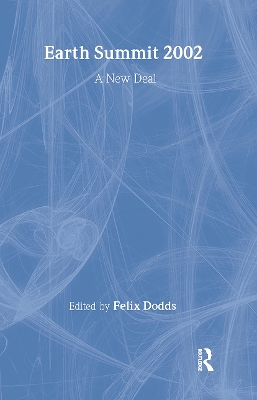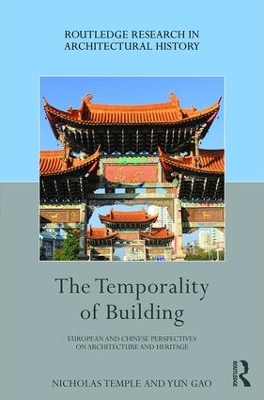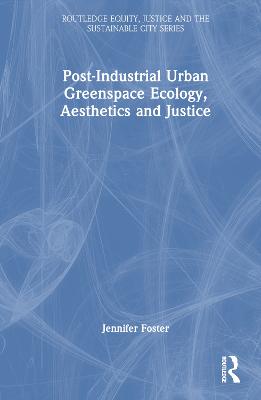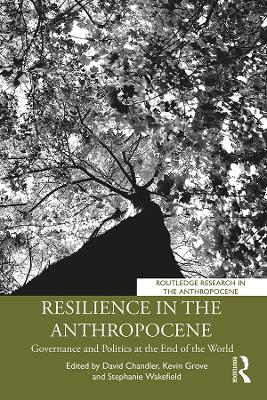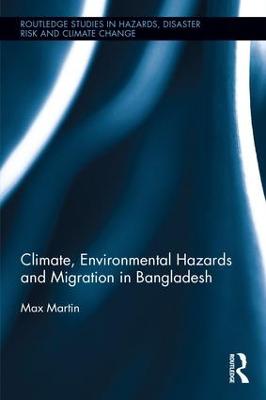Educating for Sustainability in Japan
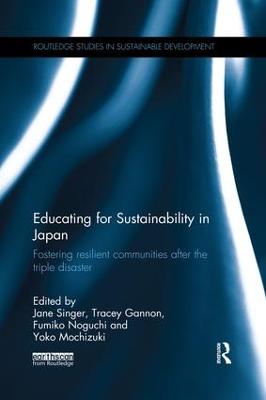 -10%
portes grátis
-10%
portes grátis
Educating for Sustainability in Japan
Fostering resilient communities after the triple disaster
Gannon, Tracey; Mochizuki, Yoko; Noguchi, Fumiko; Singer, Jane
Taylor & Francis Ltd
08/2018
292
Mole
Inglês
9781138615175
15 a 20 dias
446
Descrição não disponível.
IntroductionTop-down and bottom-up ESD: divergence and convergence of Japanese ESD discourses and practices
Yoko Mochizuki
Part I: School-based approaches
Chapter 1. Formal ESD in Japan: dissolving walls between classroom and community
Jane Singer and Yoshiyuki Nagata
Chapter 2. Implications of 3.11 for disaster education and education for sustainable development in Japan
Aiko Sakurai and Rajib Shaw
Chapter 3. Assessing sustainability learning and practice at Moriyama High School, Shiga, Japan
Yi Zhou and Jane Singer
Chapter 4. Globalising school education in Japan: an investigation using the academic ability model
Toshiya Kodama
Chapter 5. Perspectives on education for sustainable development through local cultural heritage
Shizuo Nakazawa and Tadashi Izumitani
Chapter 6. An investigation into fairness and bias in educational materials produced by the Japanese government to teach school children about nuclear power and radiation
Shinobu Goto
Chapter 7. Collaborating for change: teaching and assessing a university community sustainability course in Japan and Vietnam
Tracey Gannon, Jane Singer and Benjamin McLellan
Part II: Community-based approaches
Chapter 8. Community-based, non-formal and informal ESD in Japan: where top-down and bottom-up approaches meet
Fumiko Noguchi and Toyoshi Sasaki
Chapter 9. Can civil society revitalise dying rural villages? The case of Kamiseya in Kyoto prefecture
Binxian Ji and Katsue Fukamachi
Chapter 10. Multi-stakeholder community education through environmental learning programmes in Nishinomiya
Miki Yoshizumi
Chapter 11. From challenge to opportunity: Japanese non-profit organisations harness post-3.11 civic engagement Sarajean Rossitto
Chapter 12. A radical approach from the periphery: informal ESD through rights recovery for indigenous AinuFumiko Noguchi
Chapter 13. The Tohoku Green Renaissance Project - networking green rebuilding activities after a mega-disaster
Tsubasa Iwabuchi and Noriko Takemoto
Chapter 14. The importance of genfukei (spirit of place) to citizen participation in community building in Zushi city Koichi Nagashima
Chapter 15. Exploring the values of rural communities through place-based education in Niigata prefecture
Takako Takano
Postscript. Reflections on visions of rebuilding Tohoku: the future of ESD as a response to risk in JapanYoko Mochizuki with Makoto Hatakeyama
Yoko Mochizuki
Part I: School-based approaches
Chapter 1. Formal ESD in Japan: dissolving walls between classroom and community
Jane Singer and Yoshiyuki Nagata
Chapter 2. Implications of 3.11 for disaster education and education for sustainable development in Japan
Aiko Sakurai and Rajib Shaw
Chapter 3. Assessing sustainability learning and practice at Moriyama High School, Shiga, Japan
Yi Zhou and Jane Singer
Chapter 4. Globalising school education in Japan: an investigation using the academic ability model
Toshiya Kodama
Chapter 5. Perspectives on education for sustainable development through local cultural heritage
Shizuo Nakazawa and Tadashi Izumitani
Chapter 6. An investigation into fairness and bias in educational materials produced by the Japanese government to teach school children about nuclear power and radiation
Shinobu Goto
Chapter 7. Collaborating for change: teaching and assessing a university community sustainability course in Japan and Vietnam
Tracey Gannon, Jane Singer and Benjamin McLellan
Part II: Community-based approaches
Chapter 8. Community-based, non-formal and informal ESD in Japan: where top-down and bottom-up approaches meet
Fumiko Noguchi and Toyoshi Sasaki
Chapter 9. Can civil society revitalise dying rural villages? The case of Kamiseya in Kyoto prefecture
Binxian Ji and Katsue Fukamachi
Chapter 10. Multi-stakeholder community education through environmental learning programmes in Nishinomiya
Miki Yoshizumi
Chapter 11. From challenge to opportunity: Japanese non-profit organisations harness post-3.11 civic engagement Sarajean Rossitto
Chapter 12. A radical approach from the periphery: informal ESD through rights recovery for indigenous AinuFumiko Noguchi
Chapter 13. The Tohoku Green Renaissance Project - networking green rebuilding activities after a mega-disaster
Tsubasa Iwabuchi and Noriko Takemoto
Chapter 14. The importance of genfukei (spirit of place) to citizen participation in community building in Zushi city Koichi Nagashima
Chapter 15. Exploring the values of rural communities through place-based education in Niigata prefecture
Takako Takano
Postscript. Reflections on visions of rebuilding Tohoku: the future of ESD as a response to risk in JapanYoko Mochizuki with Makoto Hatakeyama
Este título pertence ao(s) assunto(s) indicados(s). Para ver outros títulos clique no assunto desejado.
ESD Approach;ESD Perspective;Biodiversity;Iwate Miyagi Nairiku Earthquake;Climate Change;United Nations University;Conservation;ESD Programme;Environmental economics;Educational Materials;Environmental policy;ESD Implementation;Environmental studies;ESD Project;Sustainability;ESD Activity;Sustainable development;Energy Policy;learning;Great Hanshin Awaji Earthquake;local community development;Socio Ecological Production Landscape;genkai shuraku;Civil Society;lessons;ESD Discourse;adaptation;Fukushima Daiichi Nuclear Power Plant;Fukushima;ESD Policy;nuclear;Greenpeace Japan;NGO;Environmental Learning Programmes;Todaiji Temple;community;Pre-programme Survey;participation;Post-programme Survey;EfS;Disaster Education;ESD;Peace Boat;UN decade;DRR;educating;Fukushima Nuclear Accident;Tohoku;Yoko Mochizuki;Yoshiyuki Nagata;Aiko Sakurai;Rajib Shaw;Yi Zhou;Toshiya Kodama;Shizuo Nakazawa;Tadashi Izumitani;Shinobu Goto;Tracey Gannon;Benjamin McLellan;Fumiko Noguchi;Toyoshi Sasaki;Binxian Ji;Katsue Fukamachi;Miki Yoshizumi;Sarajean Rossitto;Tsubasa Iwabuchi;Noriko Takemoto;Koichi Nagashima;Takako Takano;Makoto Hatakeyama
IntroductionTop-down and bottom-up ESD: divergence and convergence of Japanese ESD discourses and practices
Yoko Mochizuki
Part I: School-based approaches
Chapter 1. Formal ESD in Japan: dissolving walls between classroom and community
Jane Singer and Yoshiyuki Nagata
Chapter 2. Implications of 3.11 for disaster education and education for sustainable development in Japan
Aiko Sakurai and Rajib Shaw
Chapter 3. Assessing sustainability learning and practice at Moriyama High School, Shiga, Japan
Yi Zhou and Jane Singer
Chapter 4. Globalising school education in Japan: an investigation using the academic ability model
Toshiya Kodama
Chapter 5. Perspectives on education for sustainable development through local cultural heritage
Shizuo Nakazawa and Tadashi Izumitani
Chapter 6. An investigation into fairness and bias in educational materials produced by the Japanese government to teach school children about nuclear power and radiation
Shinobu Goto
Chapter 7. Collaborating for change: teaching and assessing a university community sustainability course in Japan and Vietnam
Tracey Gannon, Jane Singer and Benjamin McLellan
Part II: Community-based approaches
Chapter 8. Community-based, non-formal and informal ESD in Japan: where top-down and bottom-up approaches meet
Fumiko Noguchi and Toyoshi Sasaki
Chapter 9. Can civil society revitalise dying rural villages? The case of Kamiseya in Kyoto prefecture
Binxian Ji and Katsue Fukamachi
Chapter 10. Multi-stakeholder community education through environmental learning programmes in Nishinomiya
Miki Yoshizumi
Chapter 11. From challenge to opportunity: Japanese non-profit organisations harness post-3.11 civic engagement Sarajean Rossitto
Chapter 12. A radical approach from the periphery: informal ESD through rights recovery for indigenous AinuFumiko Noguchi
Chapter 13. The Tohoku Green Renaissance Project - networking green rebuilding activities after a mega-disaster
Tsubasa Iwabuchi and Noriko Takemoto
Chapter 14. The importance of genfukei (spirit of place) to citizen participation in community building in Zushi city Koichi Nagashima
Chapter 15. Exploring the values of rural communities through place-based education in Niigata prefecture
Takako Takano
Postscript. Reflections on visions of rebuilding Tohoku: the future of ESD as a response to risk in JapanYoko Mochizuki with Makoto Hatakeyama
Yoko Mochizuki
Part I: School-based approaches
Chapter 1. Formal ESD in Japan: dissolving walls between classroom and community
Jane Singer and Yoshiyuki Nagata
Chapter 2. Implications of 3.11 for disaster education and education for sustainable development in Japan
Aiko Sakurai and Rajib Shaw
Chapter 3. Assessing sustainability learning and practice at Moriyama High School, Shiga, Japan
Yi Zhou and Jane Singer
Chapter 4. Globalising school education in Japan: an investigation using the academic ability model
Toshiya Kodama
Chapter 5. Perspectives on education for sustainable development through local cultural heritage
Shizuo Nakazawa and Tadashi Izumitani
Chapter 6. An investigation into fairness and bias in educational materials produced by the Japanese government to teach school children about nuclear power and radiation
Shinobu Goto
Chapter 7. Collaborating for change: teaching and assessing a university community sustainability course in Japan and Vietnam
Tracey Gannon, Jane Singer and Benjamin McLellan
Part II: Community-based approaches
Chapter 8. Community-based, non-formal and informal ESD in Japan: where top-down and bottom-up approaches meet
Fumiko Noguchi and Toyoshi Sasaki
Chapter 9. Can civil society revitalise dying rural villages? The case of Kamiseya in Kyoto prefecture
Binxian Ji and Katsue Fukamachi
Chapter 10. Multi-stakeholder community education through environmental learning programmes in Nishinomiya
Miki Yoshizumi
Chapter 11. From challenge to opportunity: Japanese non-profit organisations harness post-3.11 civic engagement Sarajean Rossitto
Chapter 12. A radical approach from the periphery: informal ESD through rights recovery for indigenous AinuFumiko Noguchi
Chapter 13. The Tohoku Green Renaissance Project - networking green rebuilding activities after a mega-disaster
Tsubasa Iwabuchi and Noriko Takemoto
Chapter 14. The importance of genfukei (spirit of place) to citizen participation in community building in Zushi city Koichi Nagashima
Chapter 15. Exploring the values of rural communities through place-based education in Niigata prefecture
Takako Takano
Postscript. Reflections on visions of rebuilding Tohoku: the future of ESD as a response to risk in JapanYoko Mochizuki with Makoto Hatakeyama
Este título pertence ao(s) assunto(s) indicados(s). Para ver outros títulos clique no assunto desejado.
ESD Approach;ESD Perspective;Biodiversity;Iwate Miyagi Nairiku Earthquake;Climate Change;United Nations University;Conservation;ESD Programme;Environmental economics;Educational Materials;Environmental policy;ESD Implementation;Environmental studies;ESD Project;Sustainability;ESD Activity;Sustainable development;Energy Policy;learning;Great Hanshin Awaji Earthquake;local community development;Socio Ecological Production Landscape;genkai shuraku;Civil Society;lessons;ESD Discourse;adaptation;Fukushima Daiichi Nuclear Power Plant;Fukushima;ESD Policy;nuclear;Greenpeace Japan;NGO;Environmental Learning Programmes;Todaiji Temple;community;Pre-programme Survey;participation;Post-programme Survey;EfS;Disaster Education;ESD;Peace Boat;UN decade;DRR;educating;Fukushima Nuclear Accident;Tohoku;Yoko Mochizuki;Yoshiyuki Nagata;Aiko Sakurai;Rajib Shaw;Yi Zhou;Toshiya Kodama;Shizuo Nakazawa;Tadashi Izumitani;Shinobu Goto;Tracey Gannon;Benjamin McLellan;Fumiko Noguchi;Toyoshi Sasaki;Binxian Ji;Katsue Fukamachi;Miki Yoshizumi;Sarajean Rossitto;Tsubasa Iwabuchi;Noriko Takemoto;Koichi Nagashima;Takako Takano;Makoto Hatakeyama

